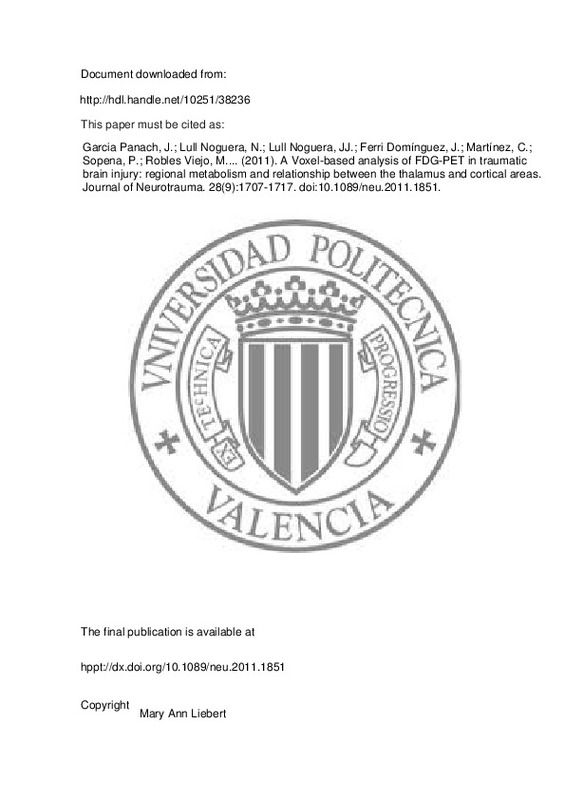JavaScript is disabled for your browser. Some features of this site may not work without it.
Buscar en RiuNet
Listar
Mi cuenta
Estadísticas
Ayuda RiuNet
Admin. UPV
A Voxel-based analysis of FDG-PET in traumatic brain injury: regional metabolism and relationship between the thalamus and cortical areas
Mostrar el registro completo del ítem
Garcia Panach, J.; Lull Noguera, N.; Lull Noguera, JJ.; Ferri Domínguez, J.; Martínez, C.; Sopena, P.; Robles Viejo, M.... (2011). A Voxel-based analysis of FDG-PET in traumatic brain injury: regional metabolism and relationship between the thalamus and cortical areas. Journal of Neurotrauma. 28(9):1707-1717. doi:10.1089/neu.2011.1851
Por favor, use este identificador para citar o enlazar este ítem: http://hdl.handle.net/10251/38236
Ficheros en el ítem
Metadatos del ítem
| Título: | A Voxel-based analysis of FDG-PET in traumatic brain injury: regional metabolism and relationship between the thalamus and cortical areas | |
| Autor: | García Panach, Javier Lull Noguera, Nuria Ferri Domínguez, Joan Martínez, Carlos Sopena, Pablo Chirivella Garrido, Javier Noé Sebastián, Enrique | |
| Entidad UPV: |
|
|
| Fecha difusión: |
|
|
| Resumen: |
[EN] The objective was to study the correlations and the differences in glucose metabolism between the thalamus and cortical structures in a sample of severe traumatic brain injury (TBI) patients with different neurological ...[+]
|
|
| Palabras clave: |
|
|
| Derechos de uso: | Reserva de todos los derechos | |
| Fuente: |
|
|
| DOI: |
|
|
| Editorial: |
|
|
| Versión del editor: | http://doi.org/10.1089/neu.2011.1851 | |
| Agradecimientos: |
A preliminary version of the manuscript presented here has obtained the 2nd award of IV Convocatoria de los Premios de Investigación en Medicina del Colegio de Médicos de Valladolid (IV edition of the Medical Research Award ...[+]
|
|
| Tipo: |
|







![[Cerrado]](/themes/UPV/images/candado.png)


